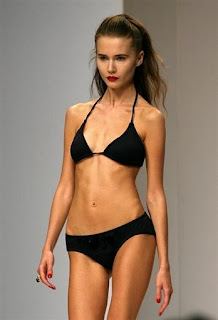The image of man (human) in popular culture has undergone a dramatic transformation. Most traditional cultures represented man as a very complex hierarchical essence, synthesizing a variety of nature (material, mental, spiritual). In today’s reality man appears in mass culture only as a material subject. Regarding to this we can recall a very popular hit of 1980ies by Madonna – “I am material girl”. Moreover, according to an officially recognized doctrine, a man comes from monkeys, and, consequently, is wholly owned by the natural world. In a condition of such a narrowing of the ontological nature of man, the highest pleasure in a hierarchy of material pleasures acts sex, sexual enjoyment. That’s why sex is one of the main values of mass culture.
Sexual Attraction is one of the most general state of the animal world, not just people. This is truly basic instinct, and hence, a production, built on sex, will not be a subject to any fashion, nor competition, or technical progress, and therefore will be stably profitable.
As most people remain heterosexual inclinations and popular culture is influenced by traditional male mentality, then the main object of sexual desire and pleasure is a woman. And consequently, in conditions of mass culture, the objects of an entire industry are woman’s industries. Clothing, underwear, stockings, cosmetics, shoes, accessories, jewelry, art of makeup and stylists, fashion – all these are huge industries producing goods for woman’s physical attractiveness – a prerequisite for obtaining a higher sexual pleasure in mass culture. With almost equal with men engagement in production, a woman in popular culture has a central role in industries of pleasure (entertainment, leisure), which contributes to woman’s influence on all manifestations of public life, which hasn’t been seen since the Stone Age!
It’s not a surprise that all these changes of truly existential scale have influenced the formation of other, non-traditional image of women. ‘Gender’ look at the woman doesn’t have only positive traits that are expressed in expanding their social role. While giving women a social freedom, the mass culture ‘in payment’ to this almost completely destroys her traditional image, bringing this freedom to destructive absurdity. In their image women lose their inextricable link of concept – ‘woman-mother’. In popular culture (especially its leisure part) the image of women is particularly associated with sex. High technologies of mass culture are promoting distancing the two concepts of ‘woman – the mother’, by giving a rise to such phenomena as cloning, surrogate mothers, children in vitro or artificial uterus. Although a certain part of society is sharply negative related to these processes, there are also many supporters of new ways of human reproduction.
A beauty of the body becomes in popular culture perhaps the major advantage of women. The beauty is seeking to become woman’s content, dislodge the spiritual, and to some extent psychological content of individual women.
In contemporary mass culture is already quite well-established and entrenched in artistic field the following archetypical images: The super-woman, the killer (“Kill Bill”, “Le Femme Nikita”) , mutton dressed female (“Death Becomes Her”, “Basic Instinct”), a woman – demon (“The Ninth Gate”), and lonely, but rapidly maturing children (“Harry Potter”). It’s easy to see that popular idea of woman’s image is not associated with such a fundamental institution of any culture, as a family.
Representations of women in popular culture are hoof, desacralised, primitive, and are seeking for destruction of the main natural function of women, which means that they are imbued with hatred for the woman, but not love. A birth of elements of a new culture is hardly possible when based on hatred, at least because it is contrary to ontological laws of life.











